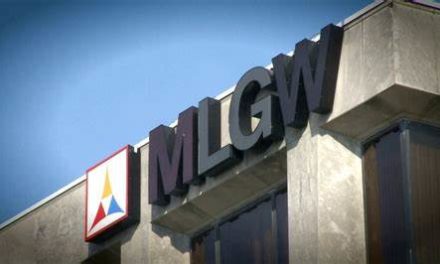http://www.youtube.com/watch?v=339kHlxamDk&feature=player_embedded
More than a decade ago, we were talking with downtown’s premiere developer Henry Turley about our concerns about our community’s overreliance on tax freezes, and if downtown payment-in-lieu-of-taxes was different from those given to industrial prospects.
As is Mr. Turley’s aptitude, he summed it up succinctly. Downtown PILOTs aren’t freezing taxes. Rather, they stop downtown taxes on properties from continuing to fall. They freeze taxes at a level that guarantees local government will get something rather than seeing a building’s taxes collapse completely.
It was a strong defense of downtown PILOTs by someone who used them frequently to get his developments off the ground, but we found little to argue with. Paul Morris, president of the Center City Commission, is also a persuasive defender of PILOTs issued by the Center City Revenue Finance Corporation.
As he points out, the downtown PILOT program does not roll back taxes and the applicant must prove that that the project would not be financially viable without the incentive. That same “what for” test was discarded by the Memphis and Shelby County Industrial Board almost before the ink dried.
The Center City PILOTs partially remedies a situation where our property tax structure punishes property owners for developing their properties and rewards property owners for holding blighted properties, Mr. Morris emphasized, pointing out that only about 5% of eligible properties have PILOTs.
Density Helps
Finally, to an issue we mention frequently here, the density of downtown results in twice as much in local taxes per square mile as the rest of city and county. That upside to city government is compounded by the fact that public services cost less downtown because of its density. As we have written, a significant problem in delivering services economically in Memphis is because density has been cut in half in the past 30 years.
As Mr. Morris said, downtowners pay more, cost less, and are the answer to unsustainable sprawl. We couldn’t have said it better, but we would add that research is showing that cities’ densities are directly related to their creativity and entrepreneurship (because proximity of smart people is a trigger for them).
Meanwhile, Mr. Morris puts his money where his mouth is. We’ve written for years about the need for the agencies issuing PILOTs to be more transparent. We’ve complained that if they believe that the incentives are wise public investments, they should post all PILOTs on their websites. In the case of the IDB, it should also post the reports that allegedly quantify the return on investment for each tax freeze. Its officials quote the reports as gospel but the unwashed masses have no opportunity to read them and ask questions about methodology or results.
Back to the Center City Commission: It is now posting the PILOTs it grants on its website. It becomes the first agency who matches its rhetoric about openness with openness itself. You can see the terms of the PILOTs and their beneficiaries here.
Progress
If you want to see the amount of taxes being waived each year for each project by the Center City Revenue Finance Corporation, you can visit the Shelby County Trustee’s website. To see them, click here. The trustee posts a yearly PILOT report that also includes those approved by the Industrial Development Board and the Health, Housing and Educational Facilities Board.
Previously posted July 12, 2006:
It’s time for a modest proposal regarding the controversial city-county PILOT program waiving $50 million in property taxes this year.
“Modest” being the operative word, since it seems obvious at this point that is what government officials are going for as they study the tax freeze programs to death and seem poised to water down substantive changes recommended by the city and county’s own consultants.
Here’s the idea. While this issue drags on, post on the websites of Memphis and Shelby County Governments all existing tax freezes and every new one approved by the Memphis and Shelby County Industrial Development Board and the Center City Commission Revenue Finance Corporation.
It seems only fair that the citizens whose taxes are being waived know why.
Inertia
Mayor Herenton has been an outspoken defender of the tax freeze program, and at times seems to point to it as the answer to all that ails his city. Economic development officials claim that Memphis cannot compete unless it gives away its taxes. Mayor Wharton’s committee is eerily quiet. Memphis City Council rattles its saber, but takes no real action to improve things. The Shelby County Board of Commissioners avoids the subject like the plague, because after all, it’s election season and the real estate interests pushing for this program just happen to be major campaign contributors.
All forces seem to be in alignment – for complete inaction.
In light of the staunch defenders of the PILOT program and arguments about its important role in economic development, surely they would welcome the chance to post information about the tax freezes to the Web.
At this point, it’s as easy to find Shane Battier at a Grizzlies team meeting as to find information about the tax freezes on a local government website. In fact, the only place to find information is on the State of Tennessee website and there it is outdated.
Transparency
It would prove instructive to the public to see the length of each PILOT, how much in city and county taxes are being waived, the number of jobs being created and their average wages, and the recipients. Surely, there’s no reason that advocates of the status quo with the PILOT program wouldn’t object, since they confidently praise the program’s worth and tell the public that it’s good public policy.
It would be productive if we actually allowed the public to have the information to reach their own decision and to have a voice in the reforms that are needed for the program.
Accountability and transparency are the cornerstones for good government and the support by the people it serves. They are sadly lacking qualities when it comes to the tax freezes approved by the IDB and CCRFC.
Perhaps, we could learn from the state of Illinois, which now has a public website where any citizen can track which companies are receiving tax breaks, how much they amount to, the promises made by the businesses to get them and whether the company is delivering. Already, it’s been a revelation: 60 percent of the jobs supported by these public incentives pay less that what it takes for families to live on.
Sunset
Other states are looking into sunset provisions that mandate periodic evaluation of tax incentives to determine if their true costs are being calculated and if policy makers fully understand the trade-offs that they are making.
Ohio, for example, has a bill pending in the state legislature that would require the review of tax incentives every five years to guard against abuses and to ensure the wisest possible investments.
Already, we have the warning signs. Two researchers at George Mason University pointed out in a detailed analysis of the local PILOT program that tax freezes are regularly increased by the addition of discretionary points recommended without clear justification by the staff and awarded by the IDB.
The professors also poked holes in the economic impact study commissioned by the IDB that contends that the tax freezes generate monumental returns on investment. Of course the same firm predicted that the Grizzlies’ presence in Memphis would create $1.5 billion in economic impact.
Flaws
According to the George Mason professors, the economic impact study for the IDB had fatal flaws, such as erroneous calculations, fallacious assumptions and errors in fact.
This recent independent analysis, coupled with the indictment issued by local governments’ own consultants in December, should be enough to jump start changes in the PILOT program. And yet, city and county governments continue to dole out tax freezes to one and all if they can complete the application and check the right boxes.
Often, it’s a case of the rich get richer because small businesses get no such financial incentives. It’s also often a case of the poor staying poor, because some of the companies that enjoy the largesse of government pay so little that its employees also qualify for food stamps.
It’s a sad commentary on the state of local public policy analysis. Officials have watched as the freezes have mounted, now equating to $60 million in property taxes a year. And yet, we are still to wait. As we do, we should keep in mind that if city and county governments had those tax revenues, they could pay for the FedExForum in four years, or they could support enough bonds to pay for all new schools and school renovations requested by Memphis City Schools and Shelby County Schools or execute plans to upgrade city parks and improve Shelby Farms Park.
Tax Reduction
Or the city and county tax rates could both be reduced, possibly the most compelling action to make Memphis and Shelby County more competitive.
In other words, this is an issue that deserves serious consideration based on its public policy implications rather than its political implications. In the meantime, if people want to argue that the PILOT program should be protected from the fundamental reform that it needs, the least they can do is show us what they are talking about.
(Following this post, the Trustee’s office began to post annual reports on PILOTs on its website.)




